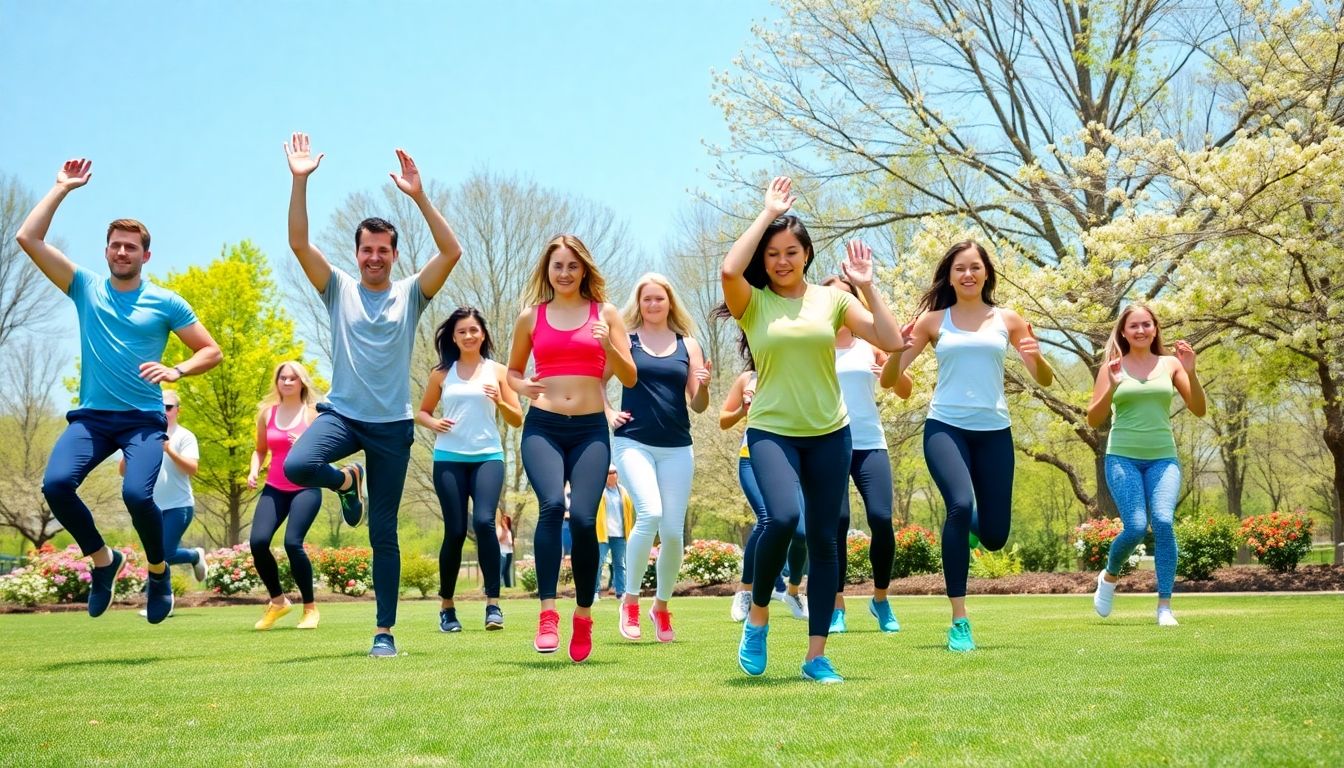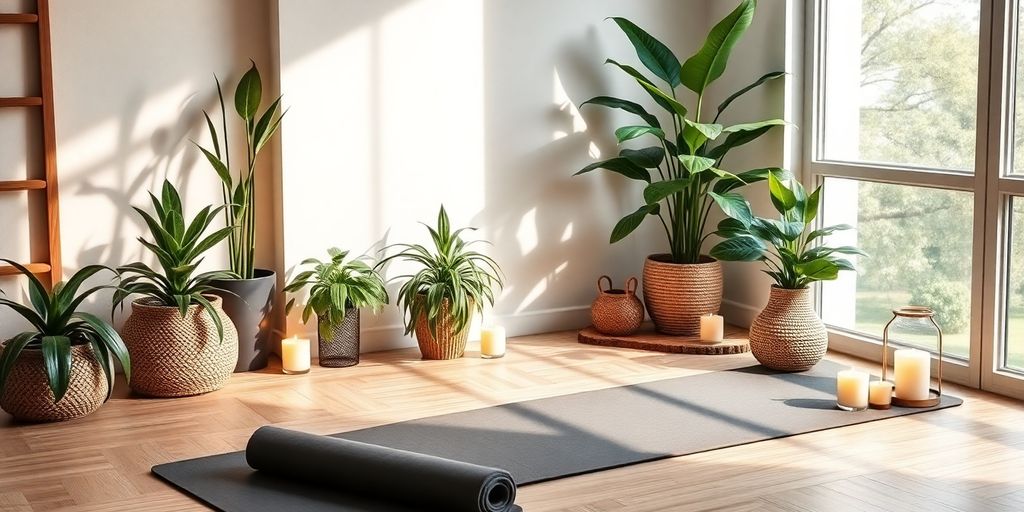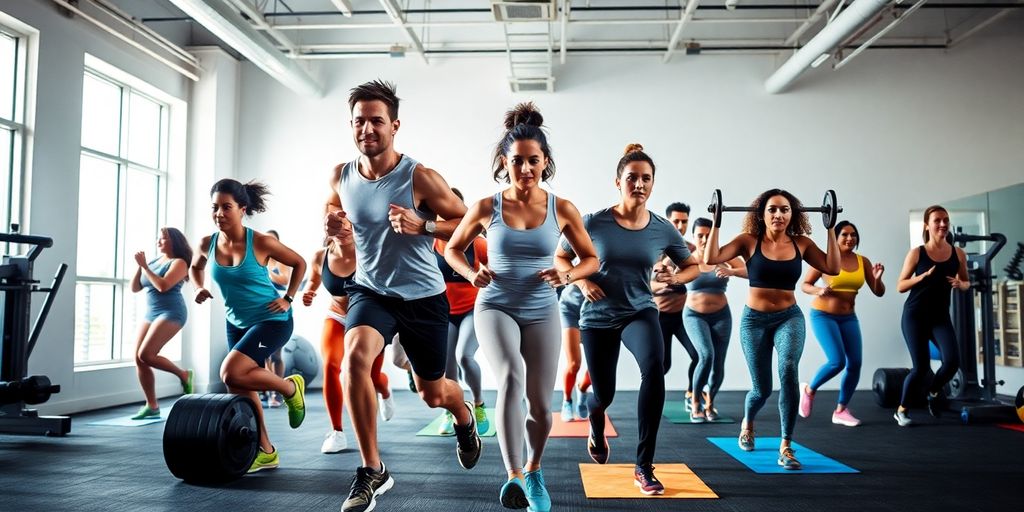Spring is finally here! It’s the perfect time to shake off the winter cobwebs and get moving. Whether you want to boost your mood or kickstart your fitness routine, spring fitness is all about embracing the outdoors and getting active. These seven simple moves will help you build a solid foundation for a healthier spring. Let’s jump right in!
Key Takeaways
-
Jumping jacks are a great way to get your heart rate up quickly.
-
High knees help improve your cardio and leg strength.
-
The Icky Shuffle is fun and great for agility.
-
Forward and back runs help with speed and coordination.
-
Lateral lunges target your legs and improve balance.
1. Jumping Jacks
Okay, let’s kick things off with a classic: jumping jacks. I know, I know, they might seem a little old-school, but trust me, they’re a fantastic way to get your heart pumping and warm up your entire body. Plus, you can do them pretty much anywhere, which is always a bonus.
Here’s the deal: start with your feet together and your arms at your sides. Then, jump up, spreading your legs out to the sides and raising your arms overhead. Jump again to bring your feet back together and lower your arms. That’s one rep. Easy peasy, right?
The key is to keep a steady pace and focus on engaging your core. Don’t just flop around; think about controlling the movement. If you’re just starting out, aim for 2-3 sets of 15-20 reps. As you get stronger, you can increase the number of reps or sets. You can also try variations like adding a clap overhead or doing them with resistance bands for an extra challenge. Jumping jacks are great for cardiovascular health, so don’t skip them!
2. High Knees

Okay, high knees. I know, I know, they look kinda silly, but trust me, they’re amazing for warming up and getting your heart pumping. I remember the first time I tried doing them properly – I was so out of breath after like, ten seconds. But hey, practice makes perfect, right?
Here’s the deal: you’re basically running in place, but you’re bringing your knees up super high. Like, aim for waist level. It’s harder than it sounds! Make sure you’re engaging your core and keeping your back straight. Don’t just flop around; think about controlled movements.
I usually do these for about 30 seconds at a time, then take a little break. Repeat a few times, and you’ll definitely feel it. It’s a great way to enhance cardiovascular endurance and get ready for the rest of your workout.
High knees are not just a warm-up exercise; they’re a full-body engagement that improves coordination and strengthens your core. Focus on form over speed to maximize benefits and prevent injury.
Here’s a little breakdown:
-
Stand tall with your feet hip-width apart.
-
Bring one knee up towards your chest, then quickly switch to the other knee.
-
Pump your arms as if you’re running.
-
Keep a steady pace and focus on lifting your knees high.
3. Icky Shuffle
Okay, so the Icky Shuffle might sound a little silly, but trust me, it’s a great way to get your heart pumping and improve your agility. It’s named after Icky Woods, the Cincinnati Bengals running back, who made it famous. It’s all about quick feet and lateral movement, which is awesome for coordination. You can even find Bengals merchandise to show your team spirit while you work out!
Here’s how to do it:
-
Start in an athletic stance, knees slightly bent, feet shoulder-width apart.
-
Shuffle to your right by taking a step to the right with your right foot, then quickly bringing your left foot next to your right foot.
-
Immediately shuffle to the left by stepping to the left with your left foot, followed by bringing your right foot next to your left foot.
-
Continue shuffling back and forth, keeping your movements quick and controlled. Try to maintain a low center of gravity throughout the exercise.
The key is to stay light on your feet and keep the movements fluid. Don’t let your feet get too far apart during the shuffle. Think quick, short steps.
To make it more challenging, you can add some variations:
-
Increase the speed of your shuffle.
-
Add a hop as you bring your feet together.
-
Try shuffling in different directions – forward, backward, and diagonally.
This exercise is great for warming up before a workout or as part of a fitness training drills circuit. It’s also a fun way to add some variety to your routine. So, get shuffling and feel the burn!
4. Forward and Back Run

Okay, so this one might sound super basic, but trust me, it gets your heart pumping. It’s all about quick feet and coordination. Think of it as a mini-sprint drill right in your living room or backyard. Plus, it’s a great way to warm up those leg muscles before you get into the more intense stuff.
Start with your feet together, standing tall. Then, quickly run forward a few steps, and immediately run backward to your starting point. Repeat this a couple of times. Now, add a shuffle to the mix. After your forward and back runs, shuffle to the side a few steps, then shuffle back. Keep it going, alternating between the forward/back run and the side shuffle. The key is to keep your movements quick and controlled.
I like to imagine I’m dodging obstacles while I do this. It makes it a little more fun, and it helps with agility. You can even add some arm movements to get your upper body involved. Just swing your arms naturally as you run and shuffle. Remember to maintain good posture throughout the exercise. Keep your core engaged and your back straight. This will help prevent injuries and improve your form. If you want to improve your hip mobility exercises, this is a great exercise to do so.
This exercise is great because you can easily adjust the intensity. If you’re just starting out, take it slow and focus on getting the movements right. As you get more comfortable, you can increase the speed and the number of repetitions. You can also add variations, like high knees or butt kicks, to make it even more challenging.
Here’s a simple way to track your progress:
-
Week 1: 3 sets of 10 repetitions (forward/back run + shuffle)
-
Week 2: 4 sets of 12 repetitions
-
Week 3: 5 sets of 15 repetitions
Remember to listen to your body and take breaks when you need them. The goal is to challenge yourself, but not to overdo it. And most importantly, have fun!
5. Lateral Lunges
Lateral lunges are great because they work your legs in a different way than just running or squatting. I find these especially helpful after a long day of sitting because they really get into those hip muscles that get all tight. Plus, they’re not too hard to get the hang of, which is always a bonus.
Here’s how I usually do them:
-
Start standing with your feet hip-width apart.
-
Take a big step to the side with your right foot, keeping your left leg straight.
-
Bend your right knee, pushing your hips back like you’re sitting in a chair. Make sure your knee doesn’t go past your toes.
-
Push off with your right foot to return to the starting position.
-
Repeat on the other side.
I usually aim for about 10-12 reps on each leg. You can even add some light dumbbells to make it a bit harder. Just remember to keep your back straight and your core engaged. It’s easy to get sloppy with form, and that’s when you risk pulling something. If you’re feeling it in your knees, try not to go down as far. You can also try side lunges with a shorter range of motion.
I’ve found that doing these regularly has really helped with my balance and stability. I feel more solid when I’m hiking or even just walking around. It’s a small thing, but it makes a difference.
6. Squat Jumps
Okay, squat jumps. These are gonna get your heart pumping, no doubt. I remember the first time I tried doing a bunch of these – thought I was in decent shape, but boy, was I wrong! They look simple, but they’re a real test of endurance and strength. Plus, they’re great for building some power in your legs. You can enhance fitness by adding these to your routine.
Here’s the deal:
-
Start with your feet shoulder-width apart. You know, the usual squat stance.
-
Squat down like you’re about to sit in a chair. Get that booty low!
-
From the bottom of the squat, explode upwards, jumping as high as you can.
-
Land softly, right back into the squat position, and repeat.
The key is to keep your core engaged and land softly to protect your knees. Trust me, your knees will thank you later. Start with maybe 3 sets of 10-12 reps and see how you feel. You can always increase the reps or sets as you get stronger.
I like to think of squat jumps as a mini-plyometric workout. They’re not just about building muscle; they’re about improving your explosive power and agility. It’s like you’re training to be a superhero, one jump at a time. Just remember to focus on form and listen to your body. If you feel any pain, stop and rest. No need to push yourself too hard, especially when you’re just starting out.
And if you’re looking to mix things up, try adding a little forward movement to your squat jumps. It’s a fun way to challenge your balance and coordination. Just be sure you have enough space!
7. Plank to Push-Up
Okay, this one’s a bit of a combo move, and it really gets your core and upper body working together. It’s not just about strength; it’s about control and stability. I remember the first time I tried this, I was all over the place, wobbling like crazy. But hey, practice makes progress, right?
Here’s how I usually break it down:
-
Start in a plank position. Make sure your body forms a straight line from head to heels. Engage your core – think about pulling your belly button towards your spine.
-
From the plank, lower yourself down onto your forearms, one arm at a time. You’re now in a forearm plank.
-
Reverse the movement, pushing back up onto your hands, one hand at a time, until you’re back in the starting plank position.
-
Now, perform a push-up. Lower your chest towards the ground, keeping your elbows close to your body, and then push back up.
-
Repeat the plank-to-push-up sequence for the desired number of reps. I usually aim for 8-12 reps, but start with what you can comfortably do with good form. If you need to, you can modify the push-up by doing it on your knees. This push-up progression plan can help you build strength gradually.
Remember to focus on maintaining a straight line throughout the exercise. Avoid letting your hips sag or rise too high. It’s better to do fewer reps with good form than to crank out a bunch of sloppy ones.
This move is a real test of endurance, but it’s so worth it. You’ll feel it in your core, chest, shoulders, and triceps. Plus, it’s a great way to add some variety to your workout routine.
Wrap-Up: Embrace Spring Fitness
So there you have it! Seven simple moves to kickstart your spring fitness journey. It’s all about getting outside, enjoying the fresh air, and shaking off the winter rust. Remember, you don’t have to do it all at once. Just pick a few moves, make them part of your routine, and have fun with it. Whether you’re working out solo or with friends, the key is to stay active and keep smiling. Spring is a great time to get moving, so let’s make the most of it!
Frequently Asked Questions
What are jumping jacks and how do I do them?
Jumping jacks are a simple exercise where you jump while spreading your legs and arms out, then jump back to the starting position. Start with your feet together and arms at your sides, then jump up and spread everything out.
How can I do high knees correctly?
To do high knees, run in place while lifting your knees as high as you can. Try to get your knees up to your waist level while keeping a good rhythm.
What is an Icky Shuffle?
The Icky Shuffle is a fun side-to-side movement. You take three quick steps to one side, then lift your knee, and repeat going to the other side.
How do I perform a forward and back run?
Start with your feet together, then run forward a few steps and back to the starting point. After that, do some side steps to keep it interesting.
What are lateral lunges and how do I do them?
Lateral lunges involve stepping to the side and bending your knee while keeping the other leg straight. This helps strengthen your legs and improve balance.
What is a plank to push-up?
A plank to push-up starts in a plank position on your hands and toes. From there, lower your body to do a push-up, then return to the plank position. This works your arms, chest, and core.







